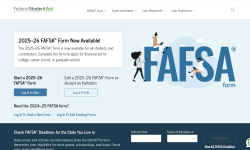Can more cash transform Michigan’s middling schools? We may find out soon

- Education groups have different proposals for how to revamp Michigan’s K-12 funding
- A $9.2 billion state surplus has school advocates recommending reforms
- With a Democratic majority in the House and Senate, school reform may take center stage
With the state flush with cash and education-friendly Democrats in charge of the House, Senate and the governor’s office, Michigan schools are likely in line for more funding in next year’s budget.
How much more money, and what programs or students those funds will benefit, is the big question.
Advocacy groups from across the educational spectrum are issuing reports and talking to legislators about how best to use additional funds to help reverse devastating declines in student learning in Michigan that occurred during the pandemic.
Related:
- East Lansing cut school security. After several fights, it reversed course
- Democrats, out of power for decades, passing bills in record time in Lansing
- Gretchen Whitmer: Expand Michigan Reconnect program for community college
All agree that it costs more to educate certain groups of students — including students from low-income backgrounds, English language learners and students with disabilities. But the groups differ on how to best address those needs.
Bridge Michigan spoke with leaders at the Michigan Partnership for Equity and Opportunity (MPEO), the School Finance Research Collaborative, the Mackinac Center for Public Policy and The Education Trust-Midwest about their ideas for changing K-12 funding.
Their recommendations are among those likely to be debated in the coming months in Capitol conference rooms and across the street in the governor’s office as state leaders divvy up a multi-billion-dollar budget surplus.
Here's what you need to know:
How Michigan funds its public schools
Roughly half of Michigan’s $19.6 billion school aid budget goes to traditional public school districts and charter schools for “foundation allowances,” which is the base amount of per pupil funding.
The other half funds specific programs, including retirement costs, federal and early childhood programs and additional dollars for the student groups that need more support to meet state education standards.
Some education groups are pitching to raise the per student funding to align with what they say students deserve and what schools need to succeed.
There’s also the idea that the state could move some of its funding related to specific programs into the per pupil student formula.
The money-spending debate is sparked by an anticipated $9.2 billion state surplus by the end of the current fiscal year, Sept. 30, including $4.1 billion in the school aid fund.
On Tuesday, Gov. Gretchen Whitmer signed a spending bill that used $706 million of the state's $9.2 billion surplus, but the remainder of the funds have not been assigned.
It’s unclear what Michigan’s next School Aid budget will look like. At her State of the State speech last week, Whitmer proposed expanding Pre-K access over the next four years and increasing funding for individualized tutoring, to be launched before spring break.
Darrin Camilleri, D-Brownstown-Township, the chair of the Senate Subcommittee on PreK-12 Appropriations, recently told Bridge he wants to “continue record investments in the per pupil allotment” in the state’s funding formula.
“What I’d like to look at differently, though, are some of these more equitable models that I think would provide for the most targeted resources at the students who need it most,” Camilleri told Bridge. “And so I’m going to be reviewing some of these studies and reports that have been put out by nonprofit leaders and education leaders and having conversations with them to figure out what is the best route as we have a brand new historic opportunity to really reimagine what education funding should be.”
He said he is not yet ready to commit to a specific approach. Camilleri said he believes the per-pupil system and the additional funding for specific programs have worked well, but said now is the time to take stock and understand if education leaders think it is working.
Some Republican lawmakers told Bridge they weren’t ready to speak on specific funding proposals yet. Others did not respond to a request for comment.
Michigan’s middling schools
That extra funding could be a boon for Michigan, where public schools are middle-of-the-pack compared to other states.
In 2022, the state’s fourth grade students recorded their lowest reading scores in 30 years on the National Assessment of Educational Progress (NAEP), sometimes referred to as the nation’s report card.
The state’s fourth graders’ average scale score ranked 40th in the country in reading and 35th in math. The state’s eighth graders ranked 23rd in reading and 25th in math.
Prior to the pandemic, the state had made some slight gains but the latest results show the gap between low-income and more affluent students widened dramatically.
Michigan’s academic struggles have a ripple effect on the state’s economy.
Dave Meador, retired vice chair of DTE Energy and member of the Michigan Partnership for Equity and Opportunity, noted that Michigan employers are having a hard time finding employees and the state has lower workplace participation rates than the national average.
He said Michigan is an “embarrassing situation” in terms of educational outcomes.
“If you say you want to grow and diversify the state's economy, and make this a top 10 place to work and live and raise a family, we've got to take on this educational issue,” Meador said in a call with other MPEO members. “It’s foundational to everything that we’re all talking about.”
Funding differences pushed by education advocacy groups
The Michigan Partnership for Equity and Opportunity (MPEO), a coalition of civil rights, business, grassroots education and philanthropic organizations, is calling on the state to factor poverty levels within each district’s funding formula.
The group, like the others, also wants more funding for certain groups of students: low-income students, English language learners and students with disabilities, based on years of research showing these students need more resources and support to learn.
The School Finance Research Collaborative, a group of business leaders and education experts, also recommends additional funding for those student subgroups along with more funding related to geographically-isolated districts. The group is also pushing for the state to pay more to support districts’ transportation costs based on how densely populated their districts are.
The Mackinac Center has not proposed specific funding amounts for student subgroups, but recommends more state dollars be shifted to the per pupil amount, rather than individual programs.
Both the Mackinac Center and the MPEO also support more transparency related to school district spending.
How are schools funded?
Michigan school districts are funded by a combination of local, state and federal funds, with most of the funding coming from the state.
Currently, school districts receive at least $9,150 per pupil from the state and then additional funds for certain groups of students.
Zahava Stadler, project director of the Education Funding Equity Initiative at New America, a Washington, D.C.-based think tank, noted that Michigan’s per pupil funding is higher than the national median, but its investment in additional support for subgroups of students falls well short of national leaders.
Given those national comparisons, Stadler told Bridge it would make sense to prioritize additional investment to boost support for students with higher needs.
The state gives additional money to schools with students considered to be “at risk” — based on factors that include homelessness, poverty, whether they are English language learners, or whether they have been abused. School districts receive 11.5 percent above the foundation allowance for these students, or about $1,052 additional funding per student. About half of all students in the state are considered to be at risk, according to a House Fiscal Agency December 2022 presentation.
Students in special education are funded at a rate of at least double the state foundation allowance — a vast improvement from past funding.
Craig Thiel, research director at the Citizens Research Council, told Bridge that state leaders “completely punted on special ed’ when voters approved Proposal A in 1994, which changed how schools are funded and provided some reforms, including more equity in district funding.
“It was something that was acknowledged as needing to be reviewed and updated in 1994. And it's basically been set on auto pilot since then.”
Does extra money make a difference?
Chad Aldeman, policy director of Edunomics Lab, a research group at Georgetown University, told Bridge that research generally shows that investing more money in low-income students producing better outcomes. But he said research is not clear on what the exact weight a state should give to particular groups of at-risk students.
He said states should be asking the question: “Which students need our help the most and where should we be investing more?”
Additionally, leaders should look to see how specific subgroups of students are performing compared with their peers. For example, he said it’s worth looking to see if students who receive special education are progressing as well as similar students in neighboring states. If the answer is no, leaders should ask, “why not?”
What are education groups proposing?
Most education advocacy groups have long urged for more — and different — school spending before Democrats won majorities this term in the state House and Senate. Severe learning loss from the pandemic and sobering standardized test scores add new urgency to the issue.
MPEO outlined its recommendations on student funding in a letter to lawmakers, the governor, state budget office and the Michigan Department of Education in December.
Education Trust-Midwest Executive Director and MPEO member Amber Arellano said the group has received “positive feedback and interest, not only from state policymakers but also from other leaders around the state.”
“There is growing interest among many stakeholders in re-examining how Michigan funds its public schools, as the current system is not demonstrating strong improvement nor performing at a high level,” Arellano said.
The MPEO proposal includes categorizing school districts into 12 different groups depending on their concentration of poverty. Under the proposal, districts would receive an additional 35 percent to 100 percent in state per pupil funding based on their poverty level.
Advocates point to Massachusetts, a leading education state that revamped its education funding in 2019 to include more funding for low-income students.
Massachusetts and Michigan have similarly large gaps between low-income and non–poor student test scores. But according to 2022 results from the National Assessment of Educational Progress, low-income Massachusetts students scored 11 points higher in fourth grade reading than low-income students in Michigan. Black fourth grade students in Massachusetts tested 17 points higher than their peers in Michigan.
Arellano of Education Trust-Midwest notes that a difference of 10 points on the NAEP represents approximately one year of learning.
She also noted that not every student who comes from an impoverished family faces the same obstacles. Those in more affluent school districts such as Troy, are going to have more resources and support available to them than a low-income student in the city of Grand Rapids, where 82 percent of students are considered economically disadvantaged.
“If you look at the concentration of poverty in those communities, they are radically different,” she said.
Arellano said those two communities have different capacities to deliver after-school and out-of-school services, enrichment and socioemotional support. Yet, she said, the current system for funding local districts “doesn't consider for those differences.”
MPEO is calling for an 80 percent to 100 percent boost in per pupil funding for English Language learners and also additional funding for students with disabilities. It said it does not yet have a determination of how much these reforms would cost the state.
A 2021 report by the School Finance Research Collaborative recommended Michigan’s base per pupil funding be boosted to as much as to $10,421 to reflect rising costs associated with COVID-19, inflation and new education laws. The group clarifies that the funding could come from state, local or federal dollars.
That same 2021 SFRC report recommends a 35 percent increase to the per pupil allowance for students living in poverty, a 35-70 percent boost for English language learners, 70-115 percent bump for special education students and a 4 percent increase for students in rural districts.
The group recommends that the state fund school transportation based on a district’s student density and the average transportation for districts in their density group. Robert McCann, project manager at the SFRC and executive director of the K-12 Alliance of Michigan, argues transportation costs ultimately should not take away from costs in the classroom.
The Mackinac Center for Public Policy, a free market think tank, also supports the idea that some students cost more to educate than others.
Director of Research Michael Van Beek told Bridge the organization supports moving more state funding to flow through the per pupil funding rather than individual programs so that local districts can make determinations on how best to spend their state funds.
He said the organization also wants school funding to be more “portable,” so that it follows the student, wherever that student attends school, including those taking classes online.
“Portability just means making it easier for students to choose a variety of public school options for themselves,” he said.
For example, Van Beek said a student in the Upper Peninsula should be able to take a course offered in a school in Detroit.
“Right now, I mean technically they could do that. But the school is not going to be guaranteed to receive any funding on behalf of that student. And if we make funding even more portable, in that way, it would create incentives for school districts to think more broadly about who they serve.”
Ultimately, he said, districts with an “excellent curriculum” and courses students want would be “rewarded with higher enrollments and more revenue.”
Taking that idea further, he said intermediate school districts, community colleges and public libraries might be able to provide education services to K-12 that also can earn funding through the School Aid fund.
Would more transparency follow more money?
The Education Trust-Midwest is also calling for more transparency around how districts spend their funds.
The organization’s national office lists Illinois, Oklahoma and Arkansas as states that do a good job of providing financial data to the public in ways that are “equity-oriented.”
Aldeman, of Georgetown, said there are also questions leaders should ask to ensure the extra money they are giving for groups of students actually makes it to the students they are intending to serve.
Van Beek, of the Mackinac Center, said school districts already have to report details around spending but it’s often “hard to find and it’s difficult to understand in many cases.”
“So leave it up to the local administrators as much as possible to spend that money as they think is best and then require them to be meaningfully transparent about it.”
A March 2022 report from the Mackinac Center lists Colorado and Georgia as examples of states with strong transparency on school funding.
Ben DeGrow, the author of that report and now policy director for education choice at ExcelinEd, a national education advocacy organization, told Bridge the state has made significant progress in equalizing the foundation per pupil grant but that there is more work to do about how to best support students with greater needs.
What about all of the federal COVID-19 relief money?
In total, Michigan schools received about $6 billion from federal pandemic relief.
It is estimated that only about 19.6 percent of the funding of the schools’ $3.7 billion from the the American Rescue Plan Act - has been spent.
Alderman, of the Edunomics Lab, said lawmakers could have different schools of thought on how the influx of federal funds impacts conversations about state funding.
He said if districts are able to make the case that they used the federal funds wisely, they may be able to advocate for those programs to continue past when the federal funds run out. He said another possibility includes that while states are more flush with cash, they can talk through funding reforms.
“If it's a cutting environment, it becomes harder to have a conversation of ‘who are the losers? Who are the bigger losers, etc?.’ Whereas right now, if a state wanted to do something it might be, ‘who are the smaller winners and who are the bigger winners’ and that's a different conversation when everyone's better off, as opposed to some people are going to be worse off.”
Michigan Education Watch
Michigan Education Watch is made possible by generous financial support from:
Subscribe to Michigan Health Watch
See what new members are saying about why they donated to Bridge Michigan:
- “In order for this information to be accurate and unbiased it must be underwritten by its readers, not by special interests.” - Larry S.
- “Not many other media sources report on the topics Bridge does.” - Susan B.
- “Your journalism is outstanding and rare these days.” - Mark S.
If you want to ensure the future of nonpartisan, nonprofit Michigan journalism, please become a member today. You, too, will be asked why you donated and maybe we'll feature your quote next time!





